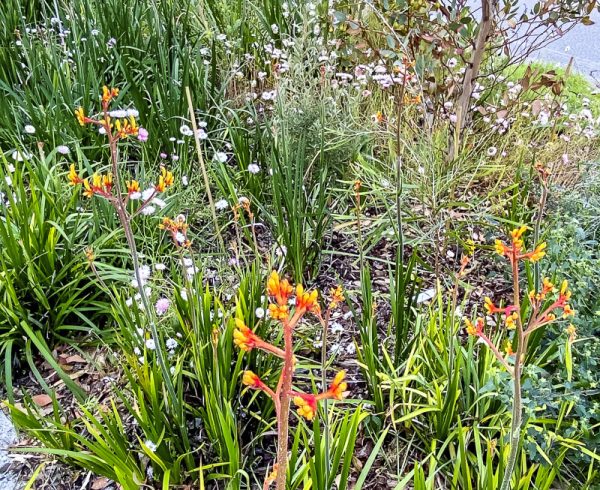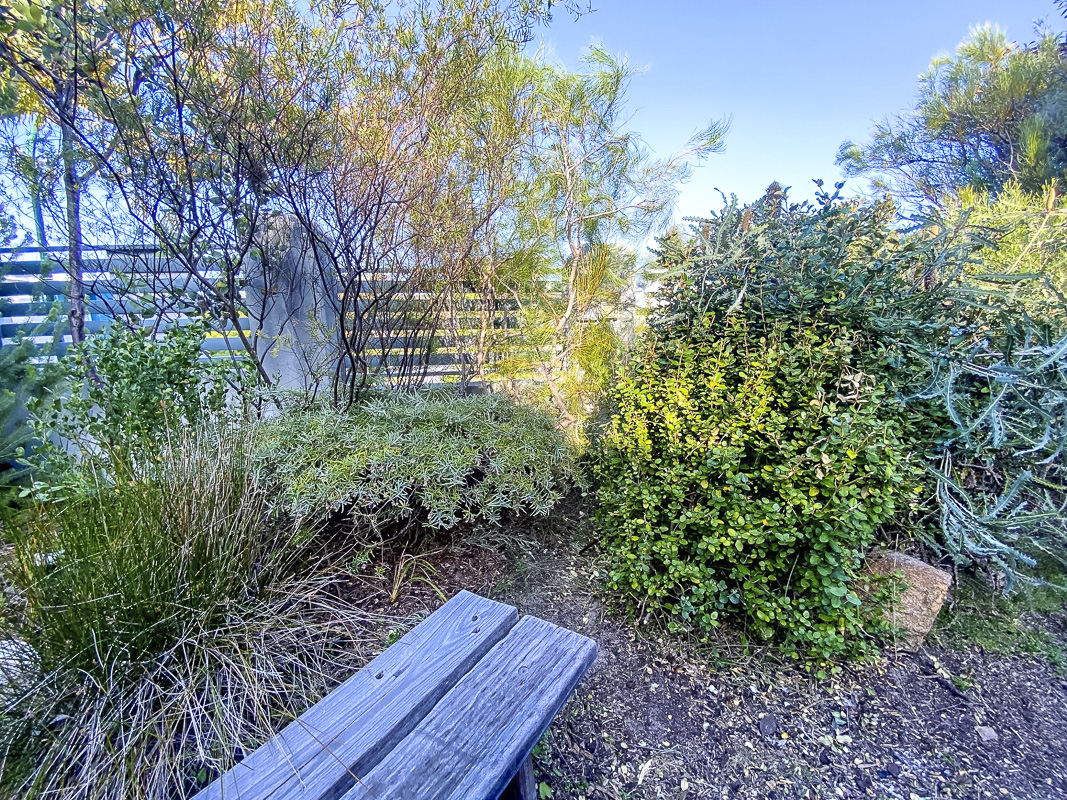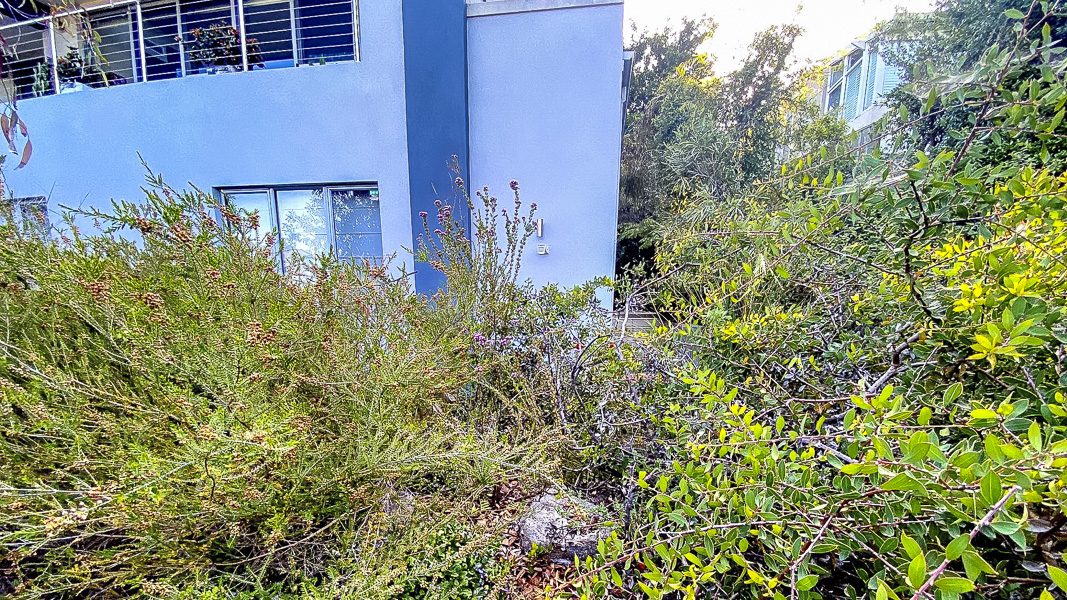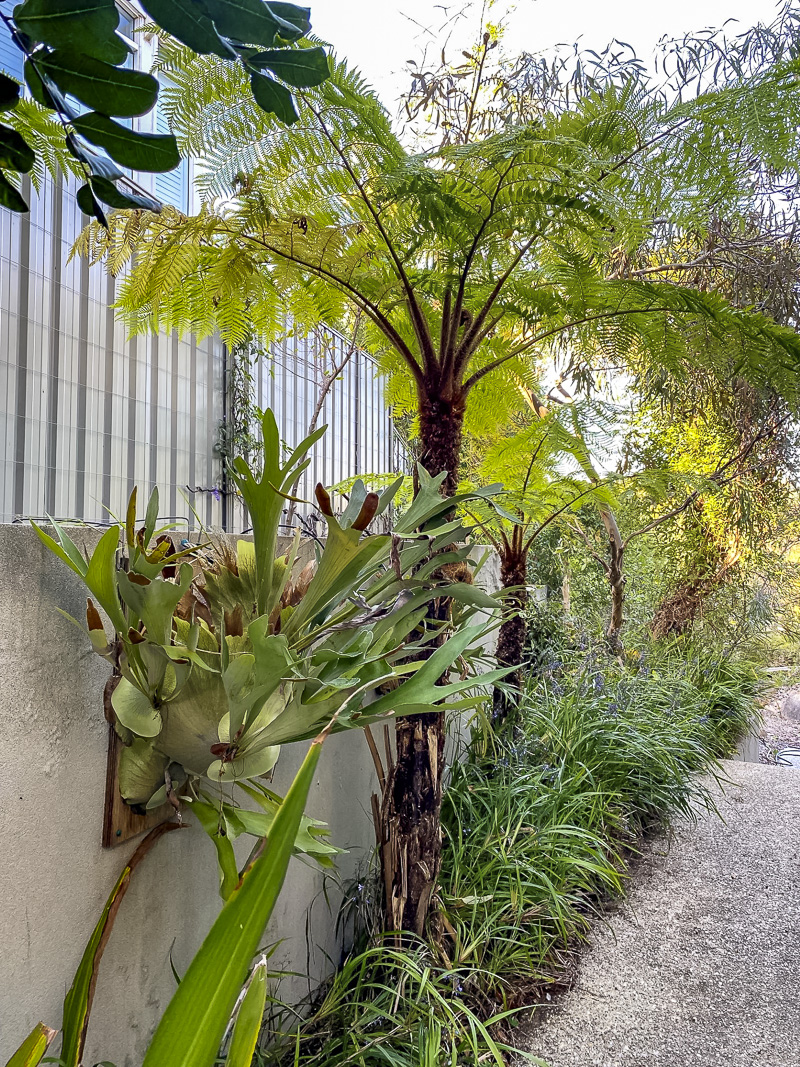Here is how I am creating multiple microclimates in my small Mediterranean garden.
My garden is a coastal garden in City Beach, a beachside suburb of Perth in Western Australia. These include: sandplain Kwongan heath, coastal sand dunes, Great Southern forest, banksia woodland, rainforest and wetland.
Gaia principle on a microscale
Gaia was the goddess of earth in ancient Greece. In 1979 James Lovelock published Gaia: A New Look at Life on Earth. His book proposes that living organisms help shape the Earths biosphere and maintain it as a fit environment for life.
As a gardener and bush regenerator, I see that the Gaia theory works even on the microscale. If we create part of a microclimate, the plants will further alter that part of the garden to suit themselves. Others like them will also benefit.

Challenging site and climate
The site of my garden is challenging: two blocks from the beach, it is really a sand dune. The soil is extremely alkaline and hydrophobic. The easterly wind blows in the mornings, especially in summer, the westerly gale blows in the afternoons.
A Mediterranean climate means good rainfall in the winter (if we are lucky) and no rain in the summer. Summer temperatures often reach the low 40’s, winters are mild, with minimum temperatures rarely below 10oC
After 13 years the gardens are well established. But like all gardens they are not static.
I like the idea of having mini ecosystems with their own microclimates.
Open, sunny and windy
The very large, east facing verge was originally planted with hybrid kangaroo paws. In addition, annually I also created a display of everlastings. I am now diversifying the planting given the open sunny site is ideal for many of the WA plants I love. The microclimate here really is like much of the WA bush: open, sunny and windy.


Kerbside garden on left, and more sheltered front garden, images Margaret Matthews
Plants here prefer little water in summer and grow in the wet Perth winter.
Plants include the woody pear Xylomelum angustifolium, fuchsia gum, Eucalyptus forrestiana and zig zag wattle, Acacia merinthophora. I have also planted pink coneflower, Isopogon formosus, and lambs’ tails, Lachnostachys eriobotyra, among others.
I planted out my neighbour’s large verge across the road, again with species that enjoy an open sunny position. The first of these were established more than ten years ago. They provide a backdrop of one-sided bottle brush, Calothamnus quadrifidus, several tuart trees and cockies tongues, Templetonia retusa. More recent plantings include a thriving Hakea Victoria, tree smokebush Conospermum triplinervium, several banksias and scaevolas.
Protected front garden with pond and rock gardens
Inside the fenced front garden, it is now more sheltered. As a consequence, I have much more shade than originally. Dense plantings of grevilleas and Banksia ashbyi (dwarf form) thrive, along with the sea urchin hakea, Hakea petiolaris and the bird beak hakea, Hakea orthorrhyncha. This provides habitat for small birds and food for the black cockatoos which visit regularly. They come for the hakea nuts and banksia flowers.
Near the steps to the front door coastal plants that grow on the sand dunes two blocks away are thriving. This includes wallaby grass, spinifex and self-sown Olearia axillaris.
A billabong style pond contains Australian water plants and reeds as well as native pygmy perch. It is home to motorbike frogs. Boronias grow in the boggy moist end of the pond.

Raised rock gardens, image Margaret Matthews
Two raised rock gardens in the centre of the garden cover the inground water tanks. This was the only way I could get enough soil to grow plants. A silver princess, Eucalyptus caesia grows in the gap between the two mounds (tanks). On one mound grows a Hakea ‘Burrendong Beauty’ and a Thryptomene baeckaena. On the second, I have a Xanthorrhoea and a Goodenia as well as a Maireana. The rockery provides excellent drainage and has several small microclimates provided by the different aspects, and shade from other plants.
Thomasia sp. and Correa sp. grow well in a small shady garden next to the pond . It has well established shrubs of holly grevillea, Grevillea aquifolium and Chorilaena quercifolia from the southern WA forests.
Sheltered cool northern garden
The sheltered garden on the north is home to tree ferns, trees from the Queensland rain forest and Dianella tasmanica and Lomandra sp. Two staghorn ferns are mounted on the wall. A tuckeroo, Cupaniopsis anacardioides, provides shelter from the westerly sea breeze which is more like a sea gale.

Difficult to grow plants such as Stylidium and Leschenaultia biloba, have succeeded in pots, another type of microclimate.
The gardens have sub-surface drip irrigation for the summer. Fortunately many of the established plants no longer need it and I prefer to hand water new plantings. All the gardens are heavily mulched with bark and leaf litter.
Multiple microclimates in a relatively small area
I am pleased that in a relatively small area I have multiple microclimates. They support sandplain Kwongan heath, coastal sand dunes, Great Southern forest, banksia woodland, rainforest and wetland.
A great outcome on a small block.
 Australian Native Plants Society (Australia)
Australian Native Plants Society (Australia)